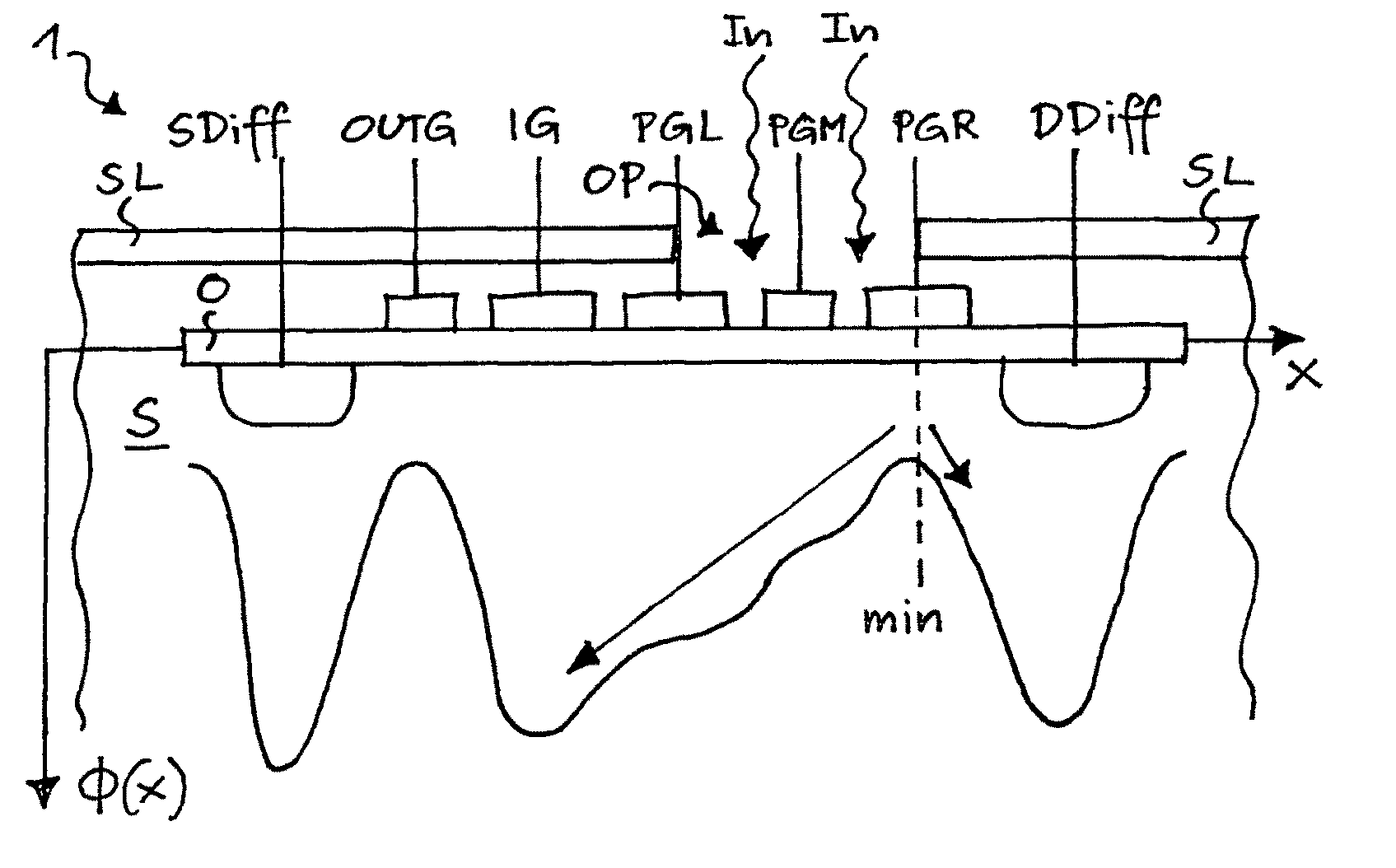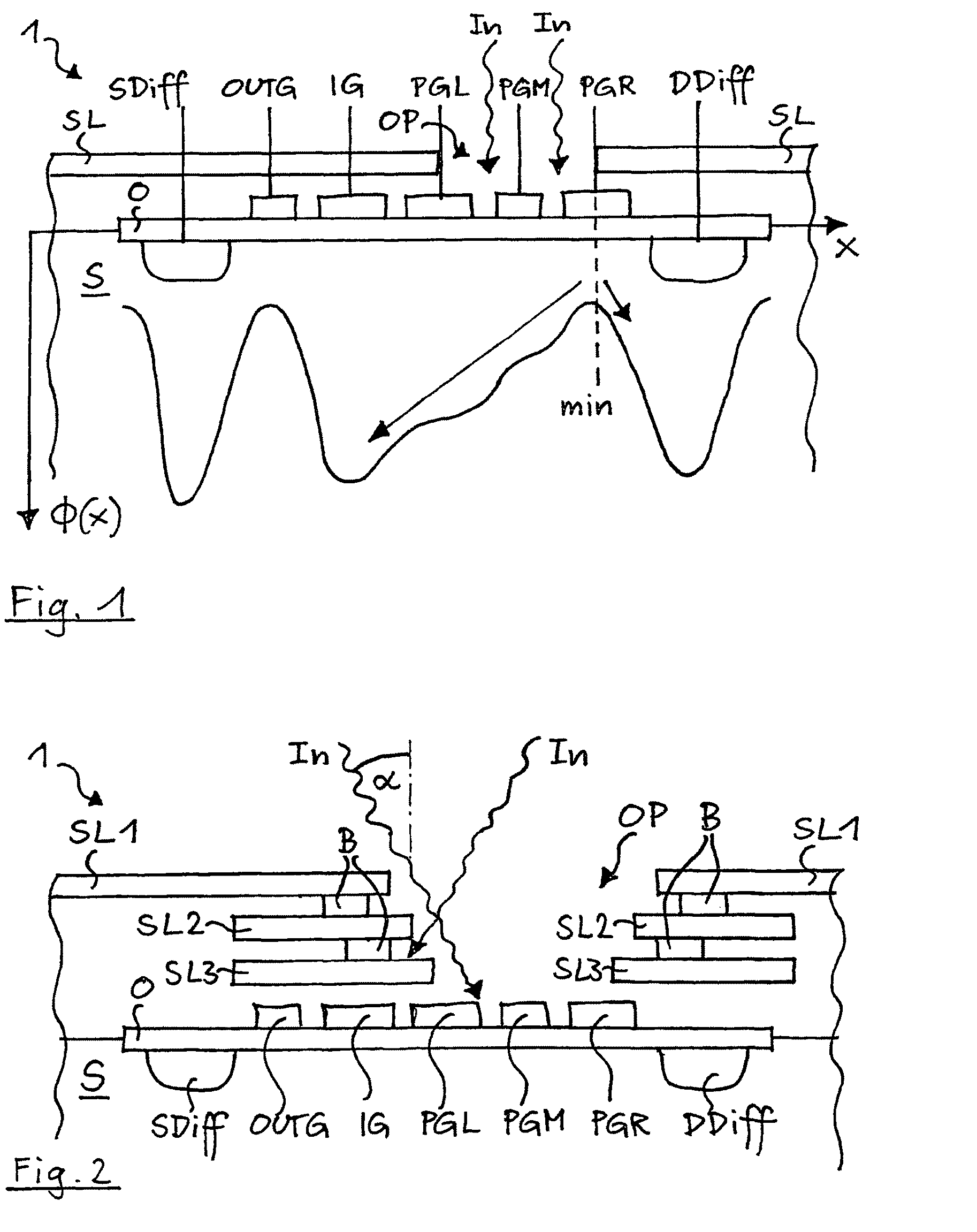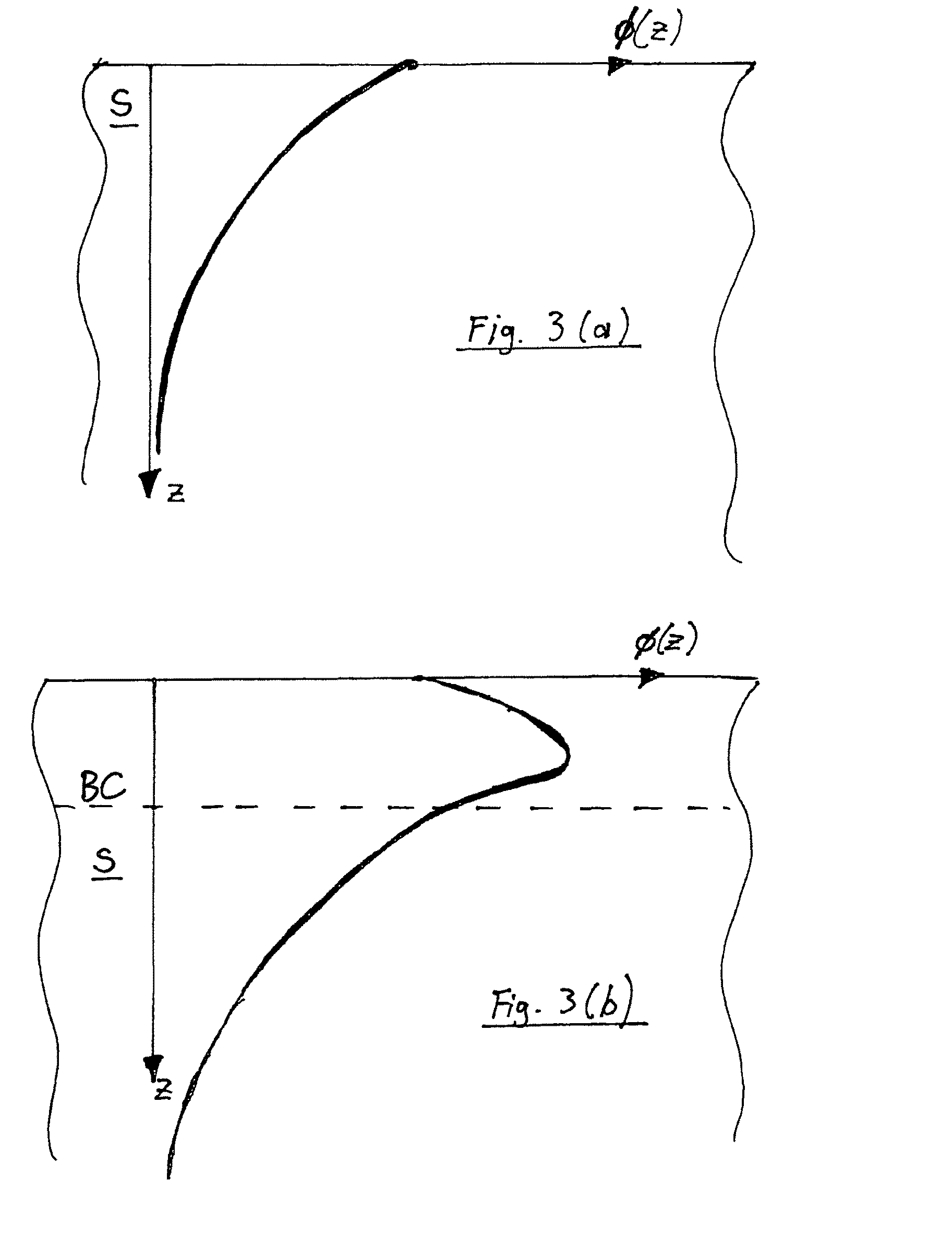Solid-state photodetector pixel and photodetecting method
a photodetector and solid-state technology, applied in the field of solid-state photodetecting, can solve the problem that the standard ccd pixels may not be sufficient, and achieve the effect of higher shutter efficiency and higher sensitivity
- Summary
- Abstract
- Description
- Claims
- Application Information
AI Technical Summary
Benefits of technology
Problems solved by technology
Method used
Image
Examples
first embodiment
[0031]FIG. 1 shows a cross-sectional view of a CCD part of a photodetector pixel 1 according to the invention. The pixel 1 comprises the well-known structures such as a left photogate PGL, a middle photogate PGM and a right photogate PGR. The region beneath the photogates PGL, PGM and PGR can be called the “active region” of the pixel, since this is the region in which incident radiation In is converted into charge carriers. The pixel 1 further comprises either at least one integration gate (IG) for storing charge carriers generated in the active region and at least one dump site (DDiff), or at least two integration gates, the integration gates (IG) and the dump-site (DDiff) being placed outside the active region. The embodiment of FIG. 1 comprises an integration gate IG, an isolation gate OUTG, a sense diffusion SDiff and a dump diffusion DDiff. All these elements PGL, PGM, PGR, IG, OUTG, SDiff, DDiff are arranged above or beneath a gate-oxide layer O on a substrate S made of, e.g....
second embodiment
[0034]It has been found that a shielding layer SL as shown in FIG. 1 shields well in case of normal incidence (α=0) of light on the pixel, but not in other cases, and especially not for large incidence angles α of, e.g., 15° and more. This is due to the three-dimensional geometric arrangement of the gates and the shielding layer SL. The latter is placed about 4 μm (depending on the used process) above the surface of the substrate S, so that light In impinging at an angle α≠0 reaches, e.g., part of the integration gate IG. This is avoided in a pixel according to the invention, shown in FIG. 2. This embodiment uses, besides a topmost shielding layer SL1, other metal layers SL2, SL3, . . . , which lie closer to the substrate S as further shielding layers. Such metal layers SL2, SL3, . . . are provided, e.g., in a standard complementary-metal-oxide-semiconductor (CMOS) process for interconnecting lines. The lowermost metal layer SL3, which lies typically about 1 μm above the surface of ...
third embodiment
[0049]a photodetecting method according to the invention also relates to a TOF range camera comprising a plurality of photosensitive areas. This method allows to control whether a pixel 1 is intact and works correctly. The idea is to create redundancy by performing at least two measurements of the same scene, however, with different phases of the emitted CW-modulated light. A phase shift of δ (in degrees) introduces an artificial distance shift of
[0050]ΔL=δ360°·c2f,
wherein c≈3·108 m / s is the light velocity in air and f is the modulation frequency. In an example where f=20 MHz and δ=180°, an artificial distance shift of ΔL=3.75 m should be obtained. If this is not the case for a certain pixel, said pixel is faulty.
[0051]Another preferred field of application of the pixel according to the invention is (bio-)chemical sensing. Some examples for such applications are given in the following.
[0052]A first application concerns (bio-)chemical sensors using luminescent labels. Two general...
PUM
| Property | Measurement | Unit |
|---|---|---|
| thickness | aaaaa | aaaaa |
| thickness | aaaaa | aaaaa |
| incidence angles | aaaaa | aaaaa |
Abstract
Description
Claims
Application Information
 Login to View More
Login to View More - R&D
- Intellectual Property
- Life Sciences
- Materials
- Tech Scout
- Unparalleled Data Quality
- Higher Quality Content
- 60% Fewer Hallucinations
Browse by: Latest US Patents, China's latest patents, Technical Efficacy Thesaurus, Application Domain, Technology Topic, Popular Technical Reports.
© 2025 PatSnap. All rights reserved.Legal|Privacy policy|Modern Slavery Act Transparency Statement|Sitemap|About US| Contact US: help@patsnap.com



